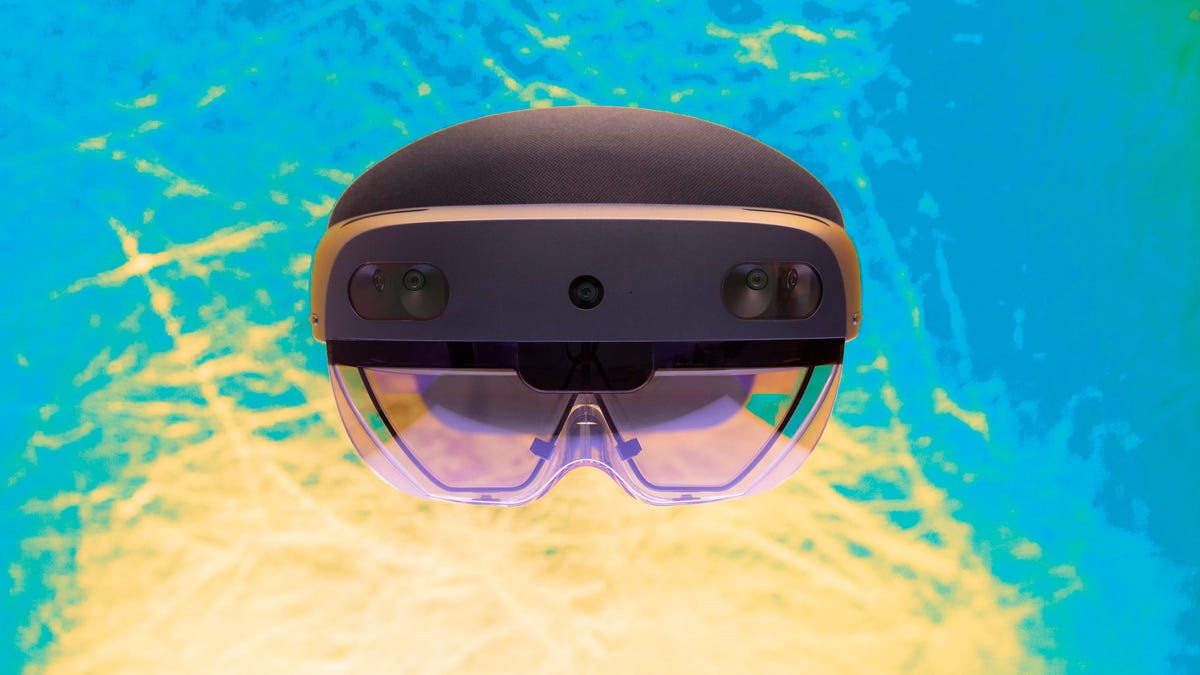Microsoft HoloLens 2 adds 5G support and is getting easier to buy
Over a year after it was announced, the HoloLens 2's key features continue to evolve. But there's still no consumer plan.

The HoloLens 2 was unveiled last year, but its AR features are still evolving.
Augmented reality and virtual reality have suddenly become more relevant in a world where people can't meet in person as easily. Devices such as Microsoft's HoloLens 2 would seem to be in prime position for a key role. Microsoft's mixed-reality news at its now-virtual annual Build developer conference is, not surprisingly, HoloLens-focused. While the company continues to slowly build out its larger-scale AR cloud tools, the HoloLens 2 is now getting 5G support... with a dongle.
Microsoft's director of mixed reality, Greg Sullivan, went over the changes that are coming, including availability for the expensive HoloLens 2. Microsoft hasn't provided specific sales numbers for the HoloLens 2 since its launch last November, but the hardware will be available in more countries this year: It's coming to the Netherlands, Switzerland, Spain, Austria, Sweden, Finland, Norway, Denmark, Belgium, Portugal, Poland, Singapore, South Korea, Hong Kong and Taiwan by the fall. Microsoft will also sell the HoloLens 2 in its online Microsoft Store this summer. But note that the hardware is still intended for businesses, not the general public.
Cloud services are slowly growing
The most memorable experience I had using HoloLens 2 a year ago was a demo where remote heads-up assistance showed me how to repair an ATV with real tools. Microsoft's Sullivan says that remote-guidance feature, Dynamics 365 Guides, has been by far the HoloLens 2's most popular app. HoloLens 2 software updates are giving the headset easier remote setup and provisioning tools for companies that want to deploy it to remote workers. Extra voice-control tools and improved hand tracking are also part of the update, and so is 5G or LTE support via connected USB dongles. Previously, the HoloLens 2 needed to work over Wi-Fi. This type of remote assistance is a clear future advantage of AR, and other companies are already dabbling with it in telemedicine and maps. Microsoft's AR services are still largely HoloLens-focused, though.
Microsoft's AR-enabling cloud services, which are being improved gradually, are arguably even more important than the HoloLens 2 itself. The company's Azure spatial anchors (real-time collaborative AR with objects that are shared in real locations, which Minecraft Earth uses), are now in wide release. Microsoft's cloud-rendering tools, which promise to deliver more detailed graphics and models in AR headsets by linking up with high-powered remote servers, have moved to public preview. I saw the potential of both when I visited Microsoft's headquarters last year to try the HoloLens 2.
The HoloLens 2 is still a business-targeted, expensive headset. Enterprise is still the focus, for now.
Could lower-cost AR headsets happen?
Cloud rendering and 5G support should mean HoloLens tech could eventually move to a more affordable, wider range of devices. Microsoft is still focusing on business and HoloLens 2 support for now, says Sullivan, but he acknowledges the rise of a wave of 5G-ready AR/VR devices that could be lower-cost. "Our approach is that we're investing in first-party hardware, and it manifests in HoloLens 2," Sullivan says. "And then our strategy is to enable an ecosystem."
Sullivan sees possibilities down the road. Microsoft could partner with third parties making AR headsets, for example, like those lower-cost Windows-compatible VR headsets released a few years ago. "With our Windows mixed-reality headsets, with our partners, we basically licensed the six degrees of freedom positional tracking," he says.
"Can we continue to drive the leading edge, and then enable our partner ecosystem to build on our learnings and scale that out in a way that makes sense for various verticals?" Sullivan asks. "There's a spectrum between us making a device, the customization program, and then licensing the IP to third parties so that they can build their own hardware."
Those types of third-party partnerships could lead to something like a cheaper HoloLens someday. It's not likely now, but that could be on tap next.

